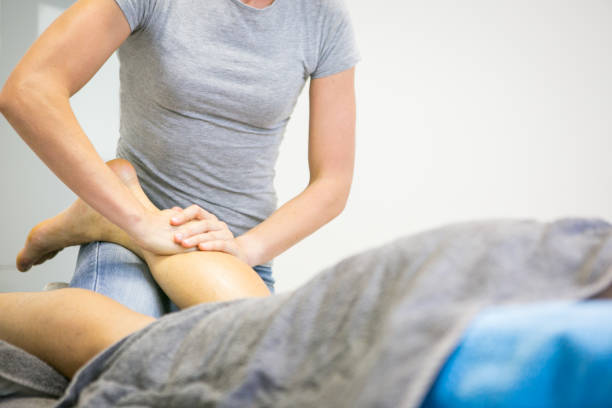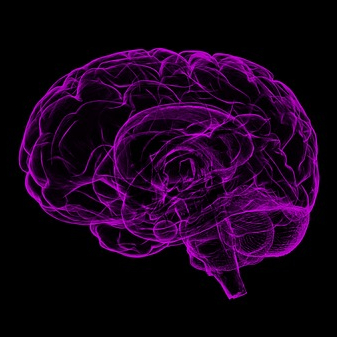What is Deep Tissue Massage?
Deep tissue massage is a popular therapeutic technique that focuses on the deeper layers of muscles and connective tissues. Unlike a traditional Swedish massage, which primarily targets relaxation and general muscle tension, deep tissue massage specifically addresses chronic muscle tension, injuries, and postural issues by applying sustained pressure and slow strokes. This technique is often recommended for individuals dealing with chronic pain, sports injuries, or muscle strains, as it can help break up scar tissue and relieve muscle knots. In this article, we’ll explore what deep tissue massage is, how it differs from other massage types, its benefits, potential risks, and what to expect during a session. Whether you’re new to massage therapy or considering deep tissue massage for specific therapeutic needs, this guide will help you understand what makes this approach unique and effective.
The Basics of Deep Tissue Massage
Deep tissue massage is a form of therapeutic massage that uses techniques specifically designed to reach the deeper layers of muscles, fascia (connective tissue), and other soft tissues. This type of massage uses firmer pressure than a relaxation massage, which is applied through slow, deliberate strokes.
Here’s a closer look at some of the key elements of deep tissue massage:
How Deep Tissue Massage Differs from Other Massage Types
There are many types of massage, each with its own purpose and techniques. Deep tissue massage is particularly distinguished by its focus on therapeutic goals and the intensity of pressure applied. Here are some ways in which it differs from other popular types of massage:
Deep Tissue Massage vs. Swedish Massage
Swedish massage is one of the most commonly practiced massage techniques, often associated with relaxation and stress relief. It uses lighter pressure and involves techniques like kneading, long gliding strokes, and rhythmic tapping. While Swedish massage aims to promote relaxation and improve circulation, deep tissue massage specifically targets chronic tension and is more focused on resolving physical issues in the muscle and fascia.
Deep Tissue Massage vs. Sports Massage
Sports massage shares some similarities with deep tissue massage, as both can involve targeted pressure and techniques to address specific muscular issues. However, sports massage is typically geared toward athletes and is often used before or after physical activity to prevent injuries, improve flexibility, and enhance performance. While deep tissue massage can be beneficial for athletes, its primary purpose is to relieve chronic pain and address musculoskeletal problems, making it suitable for anyone experiencing muscle tension or injuries, regardless of their level of physical activity.
Deep Tissue Massage vs. Trigger Point Therapy
Trigger point therapy is a technique that involves applying pressure to specific points within a muscle that are causing pain or discomfort, known as trigger points. These points often refer pain to other areas of the body. Deep tissue massage may include trigger point therapy techniques, but it also incorporates broader strokes and deeper pressure to address underlying muscle structures more comprehensively.
Benefits of Deep Tissue Massage
Deep tissue massage offers numerous physical and mental health benefits. Some of these benefits include pain relief, improved mobility, and reduced stress. Here are some of the primary advantages of deep tissue massage:
1. Relief from Chronic Pain
One of the most significant benefits of deep tissue massage is its ability to alleviate chronic pain. This type of massage can be particularly beneficial for people with conditions like lower back pain, neck pain, and shoulder tension. By targeting deep muscle layers and breaking up adhesions and scar tissue, deep tissue massage helps relieve tension and reduces inflammation, which can contribute to long-term pain relief.
2. Improved Mobility and Flexibility
Tight muscles and connective tissue can limit mobility and make it difficult to move freely. Deep tissue massage can help loosen these muscles and improve flexibility, making it easier to perform daily activities and participate in physical exercise. This is especially beneficial for individuals who experience stiffness due to poor posture, repetitive strain injuries, or prolonged periods of inactivity.
3. Faster Recovery from Injuries
Deep tissue massage can promote faster healing and recovery by increasing blood flow to injured areas, which helps reduce inflammation and promote tissue repair. This technique is often used as part of a rehabilitation program for sports injuries, muscle strains, and other soft tissue injuries. The increased circulation and lymphatic drainage provided by deep tissue massage also aid in flushing out metabolic waste products, which can help reduce soreness and swelling.
4. Reduced Muscle Tension and Improved Posture
Chronic muscle tension can lead to imbalances in the body, which can contribute to poor posture and increased risk of injury. Deep tissue massage helps release tight muscles and can correct postural issues by addressing the underlying tension patterns. By improving alignment and reducing muscular imbalances, this massage technique can support better posture and reduce the strain on other areas of the body.
5. Stress Reduction and Enhanced Mental Wellbeing
While deep tissue massage is often associated with physical benefits, it can also have a positive impact on mental health. The release of tension and reduction of pain can help lower stress levels and promote a sense of relaxation and wellbeing. Additionally, the physical touch involved in massage therapy can stimulate the release of endorphins, which are natural mood elevators, as well as reduce cortisol levels, which are associated with stress.
What to Expect During a Deep Tissue Massage Session
Understanding what happens during a deep tissue massage session can help you prepare for the experience and maximize its benefits. Here’s a general overview of what to expect:
Initial Consultation
Most sessions begin with a consultation where you’ll discuss your medical history, areas of pain or tension, and your goals for the session. Be open and honest about any injuries or health concerns, as this will help the therapist tailor the massage to your needs.
The Massage Process
During the massage, you’ll typically lie on a massage table, covered by a sheet or towel. The therapist will apply oil or lotion to facilitate smooth movements over your skin. They will use various techniques, such as deep strokes, kneading, and sustained pressure, to work on specific areas of tension. The therapist may also incorporate techniques like stretching or cross-fiber friction to target deeper layers of muscle and fascia.
Communication is Key
Throughout the session, it’s essential to communicate with the therapist about the level of pressure and any discomfort you feel. A good therapist will regularly check in with you and make adjustments as needed. Remember that it’s okay to ask for less pressure if it becomes too intense.
Post-Massage Care
After the session, take a few moments to relax and allow your body to adjust. Drinking water is essential after a deep tissue massage, as it helps flush out any toxins released from the muscles. You may also want to avoid strenuous activities for the rest of the day, as your muscles may be more sensitive than usual.
Deep tissue massage is a very beneficial treatment for many people and helps countless people every year to live in a more flexible and pain free way.


